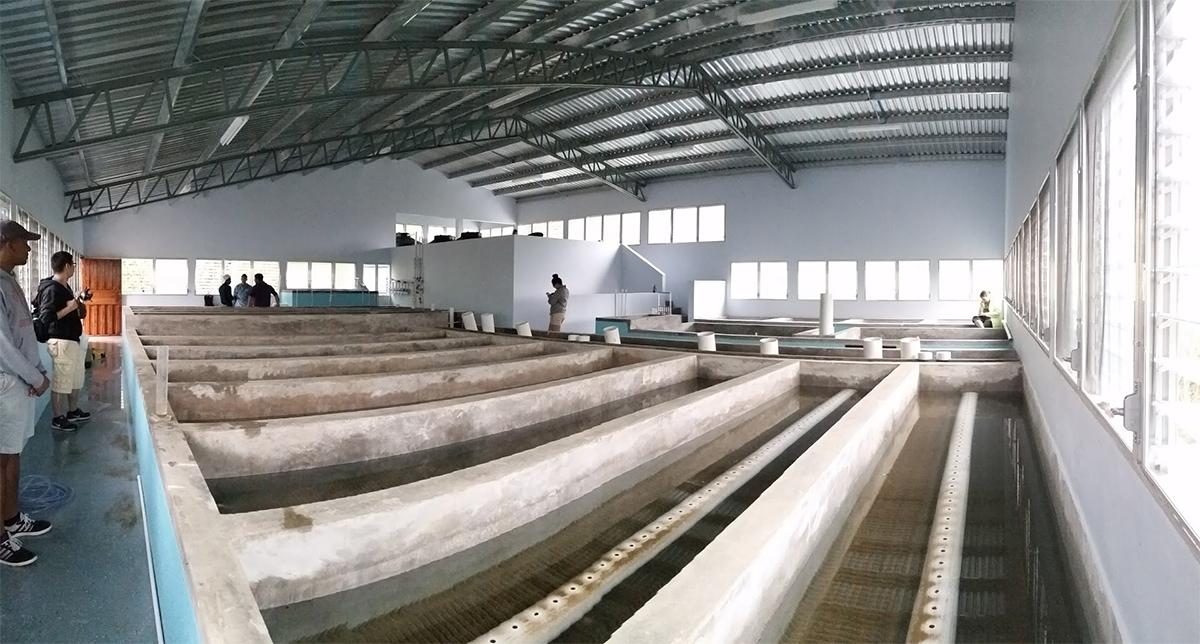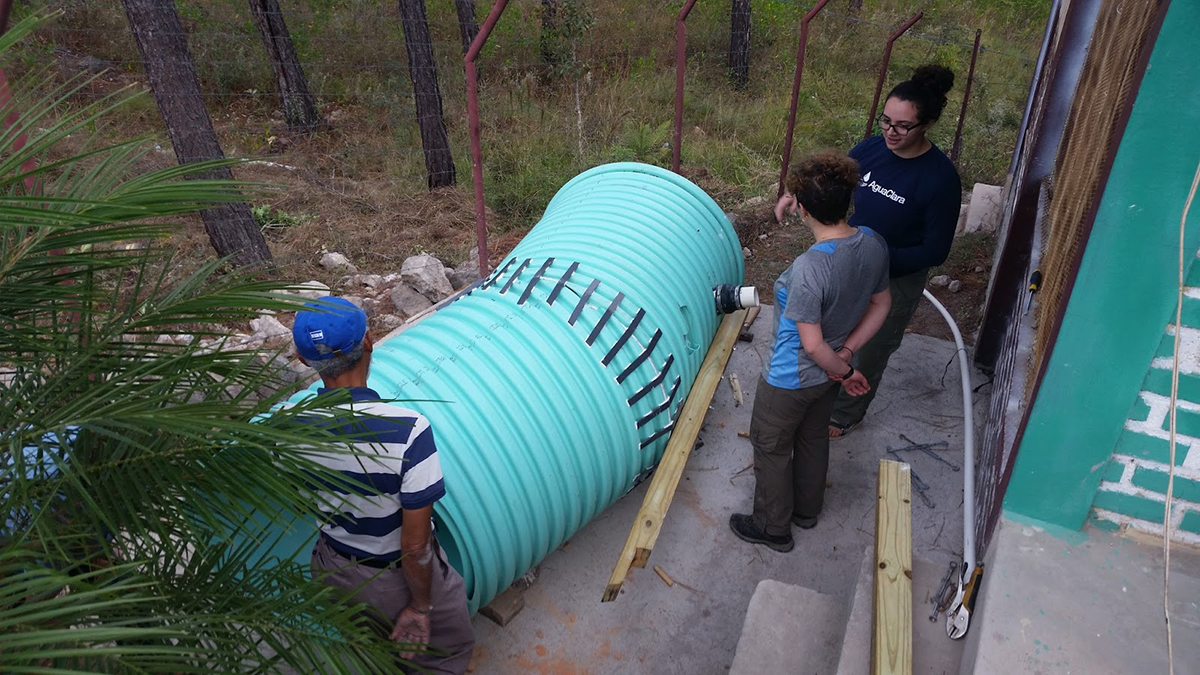AguaClara opens its 14th Honduras plant, debuts micro system
By Tom Fleischman

AguaClara was conceived more than a dozen years ago with the idea of providing clear, potable water to people in rural Honduras.
And with the opening in January of its 14th plant – AguaClara’s biggest yet, in the town of Las Vegas – the project now serves more than 65,000 people in a country of more than 8 million, half of whom have limited access to clean water. Yet, due in part to what AguaClara program director Monroe Weber-Shirk calls the “economy of scale,” providing clean water to residents in the country’s smallest villages was simply not feasible.
That is, until now. AguaClara’s latest innovation is a free-standing, 1 liter-per-second (1L/s) water treatment system, developed and tested last year in the program’s Hollister Hall lab.
“This opens up all kinds of opportunities for us,” Weber-Shirk, senior lecturer in civil and environmental engineering, said of the 1L/s technology.
AguaClara’s 14 other projects in Honduras, which operate at flow rates from 6 to 70 liters per second, all required construction of a brick-and-mortar plant to house the gravity-powered, electricity-free system. The 1L/s system – employing the same principles of flocculation, sedimentation and filtration used in the larger plants – is housed in corrugated plastic and weighs less than 1,000 pounds. It can be built off-site, shipped on a pickup truck and installed.
The first 1L/s system was built by a team of Cornell students last summer, tested in the fall and shipped to Honduras in December. And during the annual two-week trip to Honduras by members of the AguaClara student team, the system was put on line in Cuatro Comunidades, site of AguaClara’s fourth plant, built in 2009.
Due to an increase in the population of Cuatro Comunidades, the existing 6L/s plant wasn’t big enough. The town became the perfect place to test the new system.

“We implemented it when we went down in January, and they were like, ‘My goodness, this actually works!’” said Erica Marroquin ’18, one of AguaClara’s three current team leads who oversee the more than 60 students who essentially run the program, with guidance from Weber-Shirk.
The 1L/s system is the realization of a dream that began even before AguaClara was officially established in the fall of 2005. Several years earlier, Jacobo Nuñez, founder of Honduran nongovernmental organization Agua Para el Pueblo (APP), approached Weber-Shirk wondering how they could provide safe drinking water for people in Honduras’ smallest villages.
That led to the formation of AguaClara, whose technology was a solution for people in small towns and cities of up to around 25,000, but still didn’t solve the problem for those in the tiniest villages.
“It turns out that as you scale down things become increasingly challenging,” Weber-Shirk said. “That’s why small water supply systems in the U.S. have struggled, as well. It’s difficult to create a system that’s sustainable and works in a place where there aren’t as many resources. There’s also the economy of scale that works against you.”
In December of 2015, Weber-Shirk did some economic analysis and determined that developing a system for places where just a few hundred people lived was not possible. “It was just going to be too expensive,” he said.
But coming up with a totally different approach has extended AguaClara’s reach, and Weber-Shirk said the people in Honduras have already started building a factory where the 1L/s systems can be mass-produced and shipped out.
The 1L/s system is a work in progress, he said.
“Like all technologies, there will be rapid innovation with that over the next couple of years,” he said.
As for the latest brick-and-mortar plant, it has the distinction of being the first municipal water plant in Honduras to be financed by the local community and not reliant on international donations. The cost was more than $400,000.
During their two-week trip to Honduras in January, AguaClara representatives visited Zamorano University in Tegucigalpa, where APP will build an AguaClara plant later this year. The plant will serve the entire university community and will include a classroom for teaching water treatment technologies. Zamorano University’s president is Jeffrey Lansdale, Ph.D. ’91.
Media Contact
Get Cornell news delivered right to your inbox.
Subscribe